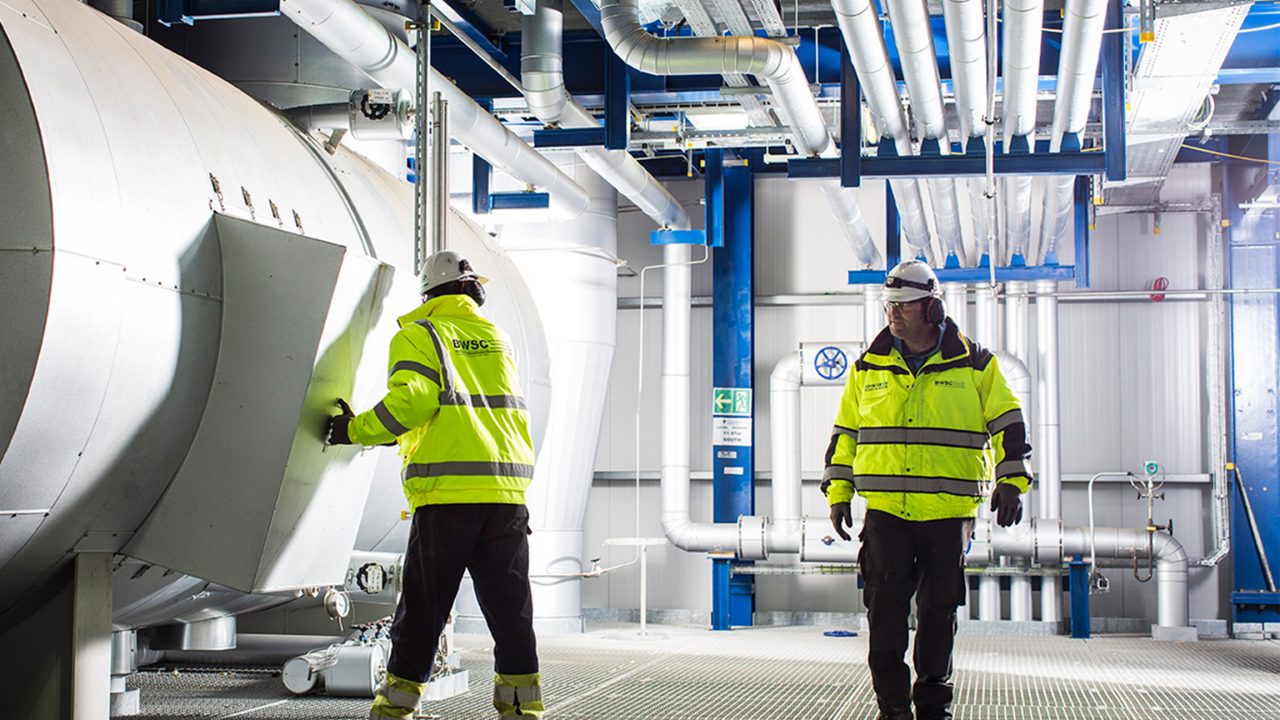

Waste and bioenergy
30 June 2016
The facility is expected to generate up to 87.4 GWh of electricity annually, enough to power more than 20,000 homes.
The facility is expected to generate up to 76.8 GWh of heat each year, equivalent to the heat used by 5,400 homes.
The plant could help avoid up to 42,000 tonnes of carbon emissions per year, the same as taking 18,000 cars off the road.
Around 100 jobs were created during construction, with the plant supporting a further 23 full-time operational roles.
The Craigellachie plant works like a traditional power station, where steam is created to drive a turbine which generates electricity. But there are two important differences.
First, the plant is fuelled by renewable forestry residue rather than fossil fuels. The low-grade wood is leftover from the local forestry industry. It is taken to the site and chipped, then used as fuel to boil water and create steam. This steam then drives a turbine to generate electricity.
Secondly, a combined heat and power plant like the Craigellachie plant is designed to capture and use steam which is often wasted in traditional power stations. This excess steam is set to be supplied through a network of pipes to local businesses providing them with heat.
These businesses include a nearby whisky distillery that needs heat as part of its production process and currently pays to generate it on-site. Using the heat from the power station is more efficient and costs less.
According to the Association for Decentralised Energy, enough energy is wasted from traditional power stations to heat every home in the UK.
Our heating needs in the UK are huge. 44% of all energy consumed in the UK is used to generate heat for our homes and businesses. In Scotland the figure is higher still at 55%.
Heating is responsible for well over a third of our greenhouse gas emissions in the UK and almost half of those in Scotland.
But the UK has made slower progress in modernising and decarbonising its heat infrastructure, compared to its electricity generation.
On the advice of the independent Committee on Climate Change, both the UK and Scottish Governments have identified greening heat as a key priority for action.
The UK Government helps support projects like the Craigellachie combined heat and power plant through its Renewable Heat Incentive programme.
The plant is an example of the type of innovative project which could be rolled out across the UK to help make our heat infrastructure more green and efficient.
While electricity can be generated in facilities some distance from its end user, heat doesn't travel well and needs to be generated and supplied locally. The Craigellachie plant is located in the north east of Scotland, a region famous for its whisky distilleries. The plant is set to supply heat and electricity to a local distillery, helping increase the efficiency of its energy-intensive distillation processes.
The plant is located in a 100 acre forestry plantation and is surrounded by a further 750,000 acres of forestry within 50 miles of the facility. The fuel for the plant is low-grade forestry residue which is harvested locally by a consortium of local growers and forestry industry suppliers. Buying from these small businesses helps sustain local forestry and woodland management operations.
A number of project partners are involved in the development and operation of the Craigellachie plant.
The project was built by project company Speyside Renewable Energy Partnership Ltd (SREP), which is made up of the plant’s equity investors and owners.
These comprise project developer and co-owner, Estover Energy Ltd, as well as equity investors John Laing Group plc and the UK Green Investment Bank.
The project partners all have extensive experience in developing and financing renewable energy infrastructure projects.
The UK Green Investment Bank is an equity investor in the Craigellachie project. The project demonstrates our two stage approach to investing in and managing green infrastructure projects.
The first stage is managed by our Investment Banking team, who source, structure and execute investments.
Craigellachie was a typical example of how we get involved early on in the project development process, work with the project developer to structure the transaction and have the flexibility to change course quickly to manage the evolving financial needs, risks and commercial structure of the project.
Once we have made an investment, our Portfolio Management team manage our involvement in the project, through construction and into operations.
Again, Craigellachie is typical of the role we play in our investments. We sit on the project company’s Board of Directors and are actively involved in increasing the value of the project including advising on project construction and process optimisation.
GIG is no longer involved in this project. This case study and the data within it were accurate at time of publish.